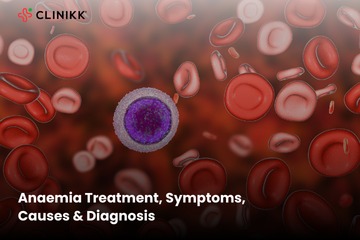A urinary tract infection (UTI) is a bacterial infection that can occur in any part of the urinary system, including the kidneys, ureters, bladder, and urethra. It is one of the most common types of infections, particularly affecting women more frequently than men.
Symptoms of urinary tract infection (UTI)
Symptoms of a urinary tract infection (UTI) can vary depending on the part of the urinary tract affected (lower or upper) and the severity of the infection.
- Lower UTI (Cystitis – affecting the bladder):
- Frequent Urination: Feeling the need to urinate more often than usual, even though little urine may be passed each time.
- Painful Urination: A burning sensation or pain during urination.
- Urgency: Sudden, strong urges to urinate that are difficult to control.
- Cloudy or Bloody Urine: Urine may appear cloudy, dark, or have a reddish tinge due to blood.
- Foul-smelling Urine: Urine may have a strong odor.
- Upper UTI (Pyelonephritis – affecting the kidneys):
- Fever: Often accompanied by chills and sweating.
- Back Pain: Pain in the upper back and sides, often around the waist area, which may be severe.
- Nausea and Vomiting: Feeling sick to the stomach, with or without vomiting.
- General Malaise: Feeling generally unwell or fatigued.
- Please note that in immunocompromised and elderly patients, these symptoms may not be present
It’s important to note that symptoms can vary from person to person, and some individuals, particularly older adults or those with compromised immune systems, may not exhibit typical UTI symptoms. Prompt medical evaluation and treatment are essential to prevent complications such as kidney damage or bloodstream infections.
What are the causes of UTI?
Urinary tract infections (UTIs) are primarily caused by bacteria that enter the urinary tract and multiply, leading to infection. The most common causative agent is Escherichia coli (E. coli), a bacterium normally found in the gastrointestinal tract.:
- Bacterial Entry into the Urinary Tract:
- Escherichia coli (E. coli): This bacterium is the most frequent cause of UTIs, accounting for approximately 80-90% of cases. It typically enters the urinary tract through the urethra and spreads upward to the bladder and possibly to the kidneys.
- Other Bacteria: Besides E. coli, other bacteria such as Klebsiella, Proteus, Enterococcus, and Staphylococcus saprophyticus can also cause UTIs, although less commonly.
- Risk Factors:
- Female Anatomy: Women are more prone to UTIs due to their shorter urethra, which allows bacteria easier access to the bladder.
- Sexual Activity: Sexual intercourse can introduce bacteria into the urinary tract.
- Certain Types of Contraception: Using spermicides or diaphragms for birth control can increase UTI risk.
- Urinary Tract Abnormalities: Conditions like urinary tract stones, strictures, or anatomical abnormalities may obstruct urine flow, making it easier for bacteria to cause infection.
- Suppressed Immune System: Conditions such as diabetes, HIV/AIDS, or undergoing chemotherapy weaken the immune system, making individuals more susceptible to infections.
- Catheter Use: People with urinary catheters have an increased risk of developing UTIs because catheters can introduce bacteria into the bladder.
- Incomplete Bladder Emptying: Conditions that prevent the bladder from completely emptying, such as enlarged prostate in men or neurogenic bladder, can increase UTI risk.
- Behavioural Factors:
- Poor Hygiene: Improper wiping after using the bathroom, especially in women (wiping from back to front), can introduce bacteria into the urinary tract.
- Infrequent Urination: Holding urine for long periods can allow bacteria to multiply in the bladder.
- Other Factors:
- Age: Older adults, particularly women after menopause, are at higher risk due to changes in hormone levels and decreased urinary tract function.
- Genetic Predisposition: Some individuals may have a genetic predisposition to recurrent UTIs.
Understanding these causes and risk factors can help in adopting preventive measures and seeking timely medical attention for UTIs. Proper hygiene, staying hydrated, and prompt treatment of predisposing conditions are crucial in reducing the incidence and complications of urinary tract infections.
Are You Looking For Doctor Appointment ?
How can UTI be diagnosed?
Diagnosing a urinary tract infection (UTI) typically involves a combination of clinical evaluation, symptoms assessment, and diagnostic tests.
- Symptoms Assessment:
- The healthcare provider will first discuss your symptoms, including urinary urgency, frequency, burning sensation during urination, cloudy or foul-smelling urine, and pelvic or back pain.
- Symptoms such as fever, chills, nausea, and vomiting may indicate an upper UTI (pyelonephritis).
- Physical Examination:
- A physical exam may be conducted to check for signs of infection, such as tenderness in the abdomen or back.
- Urinalysis:
- Urinalysis is a key test used to diagnose UTIs. A urine sample is collected and analyzed for:
- White Blood Cells (WBCs): Elevated levels indicate inflammation, suggesting a possible infection.
- Bacteria: Presence of bacteria in the urine sample indicates an infection.
- Nitrites: Certain bacteria (like E. coli) convert nitrates in urine into nitrites, which can be detected in urinalysis.
- Red Blood Cells (RBCs): Presence of RBCs may indicate inflammation or urinary tract injury.
- Urinalysis is a key test used to diagnose UTIs. A urine sample is collected and analyzed for:
- Urine Culture:
- If the urinalysis suggests a UTI, a urine culture may be performed to identify the specific bacteria causing the infection. This helps determine the most effective antibiotic treatment.
- Culture results typically take 1-2 days to complete.
- Imaging Studies:
- In some cases, especially if upper UTI or complicated UTI is suspected, imaging studies like ultrasound, CT scan, or MRI may be ordered to evaluate the kidneys and urinary tract for abnormalities or blockages.
- Special Considerations:
- Children: Diagnosis of UTIs in children may involve different approaches and considerations, including urine collection methods and interpretation of symptoms.
- Pregnancy: UTIs in pregnancy require careful management to prevent complications, so diagnosis may include frequent monitoring and follow-up.
Accurate diagnosis of UTIs is crucial to initiate appropriate treatment and prevent complications. We recommend prompt consultation with a doctor if UTI symptoms are present, especially if they are recurrent or severe.

Treatment of UTI
The treatment of urinary tract infections (UTIs) typically involves antibiotics to eradicate the bacterial infection causing the symptoms.
- Antibiotic Therapy:
- Choice of Antibiotics: The specific antibiotic prescribed depends on factors such as the type of bacteria identified (from urine culture, if done), local resistance patterns, and the patient’s medical history.
- Commonly Used Antibiotics: Examples include trimethoprim-sulfamethoxazole (TMP-SMX), nitrofurantoin, ciprofloxacin, and fosfomycin. For more severe infections or complicated cases, broad-spectrum antibiotics may be used.
- Duration of Treatment:
- Uncomplicated Lower UTI: Typically treated with a short course (3-7 days) of antibiotics.
- Complicated UTI or Upper UTI (Pyelonephritis): May require longer courses (7-14 days) or intravenous antibiotics initially if hospitalised.
- Symptomatic Relief:
- Pain Management: Over-the-counter pain relievers such as acetaminophen (Tylenol) or nonsteroidal anti-inflammatory drugs (NSAIDs) like ibuprofen may help alleviate discomfort from urinary urgency or pelvic pain.
- Urinary Alkalizers: These medications can help relieve burning or pain during urination by making the urine less acidic.
- Fluid Intake:
- Hydration: Drinking plenty of water helps flush bacteria from the urinary tract and promotes faster recovery.
- Preventive Measures:
- Hygiene: Practising good hygiene, including wiping from front to back after urination or bowel movements, helps prevent the spread of bacteria.
- Urination Habits: Urinating frequently and completely can help prevent bacteria from accumulating in the bladder.
- Avoidance of Irritants: Avoiding irritants like perfumed soaps, feminine hygiene sprays, and tight-fitting underwear can reduce irritation to the urinary tract.
- Follow-up Evaluation:
- Reassessment: After completing antibiotic treatment, a follow-up visit may be recommended to ensure the infection has resolved, especially in complicated cases or recurrent UTIs.
- Urine Cultures: In some cases, repeat urine cultures may be performed to confirm eradication of the infection.
- Special Considerations:
- Pregnancy: Management of UTIs in pregnancy requires careful consideration of antibiotic safety for the fetus.
- Children and Elderly: Treatment in these populations may require adjusted dosing and monitoring due to age-related considerations.
Associated Costs of UTI Treatment in Bengaluru
In Bengaluru, the costs associated with treating a urinary tract infection (UTI) can vary depending on several factors, including the healthcare provider, the severity of the infection, and the specific treatment required.
- Doctor’s Consultation:
- Initial consultation with a general practitioner or urologist for UTI diagnosis and prescription of antibiotics typically ranges from ₹300 to ₹800, depending on the clinic or hospital.
- Diagnostic Tests:
- Urinalysis: This test to detect bacteria and assess urine abnormalities generally costs between ₹200 to ₹500.
- Urine Culture: If a urine culture is required to identify the specific bacteria causing the infection, it may cost an additional ₹500 to ₹1,000, including laboratory processing fees.
- Antibiotics:
- The cost of antibiotics varies based on the type prescribed and the duration of treatment. Common antibiotics such as ciprofloxacin, nitrofurantoin, or amoxicillin/clavulanic acid typically range from ₹50 to ₹500 per course, depending on the brand and dosage.
- Additional Medications:
- Pain relievers or urinary alkalinizers prescribed to alleviate symptoms may cost an additional ₹50 to ₹200, depending on the medication and dosage.
- Hospitalisation (if required):
- For severe cases requiring hospitalisation for intravenous antibiotics or complications, costs can escalate significantly. Hospitalisation charges in Bengaluru may range from ₹5,000 to ₹20,000 per day, depending on the hospital and room type.
- Insurance Coverage:
- Costs may be partially covered by health insurance, depending on the policy terms, deductible, and copayment requirements.
Finding the Best Care Near You
When searching for “UTI treatment near me” or “UTI specialist near me,” look no further than Clinikk. Our clinics are strategically located across Bengaluru to ensure you have access to top-notch medical care whenever you need it.
For more information or to book an appointment, visit our website at clinikk.com. Experience exceptional healthcare services at Clinikk – your trusted partner in health.
By choosing Clinikk, you’re not just getting medical care; you’re taking steps to improve your health and well-being.. Trust us for all your healthcare needs and experience the difference of superior care provided by our dedicated team of professionals.







